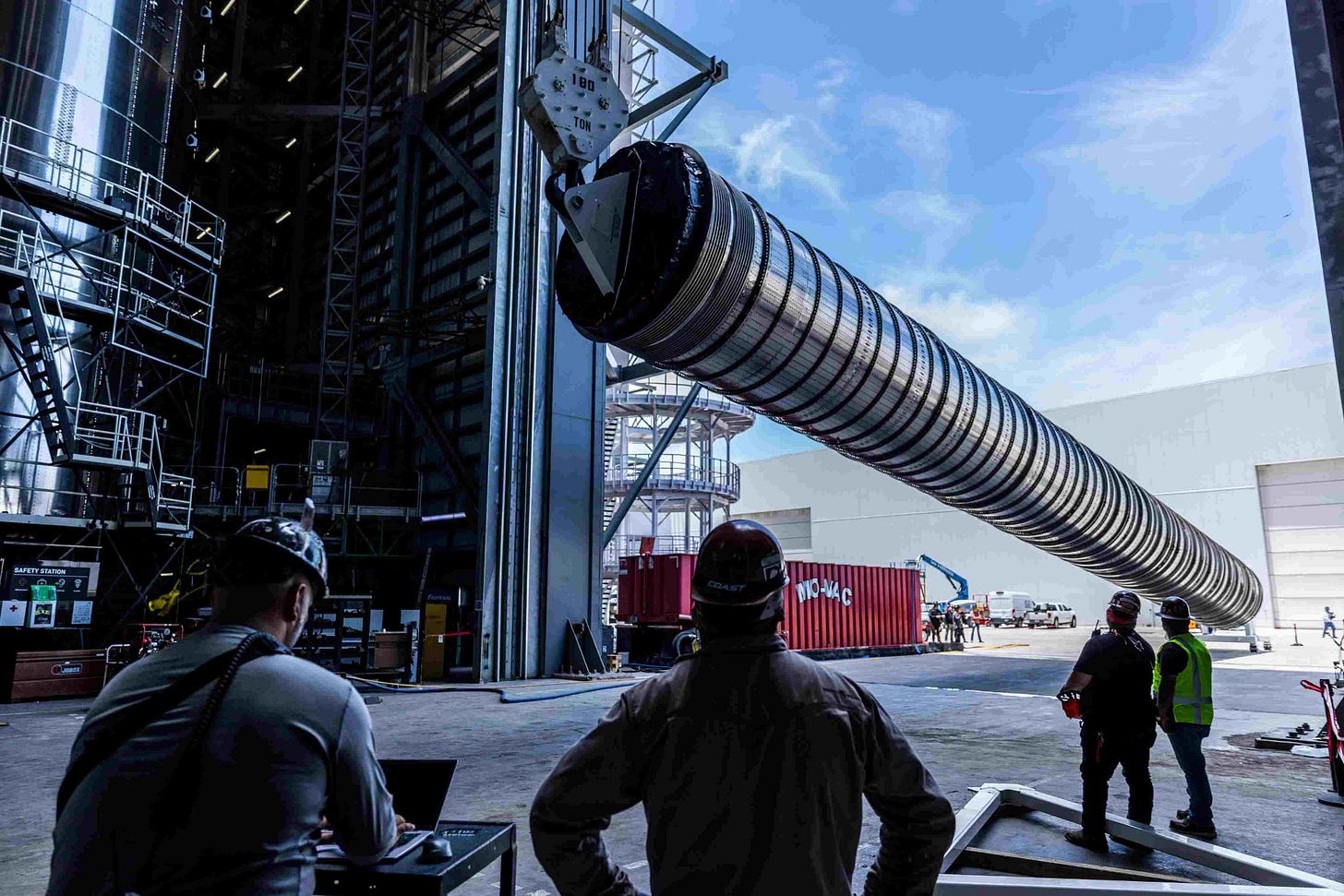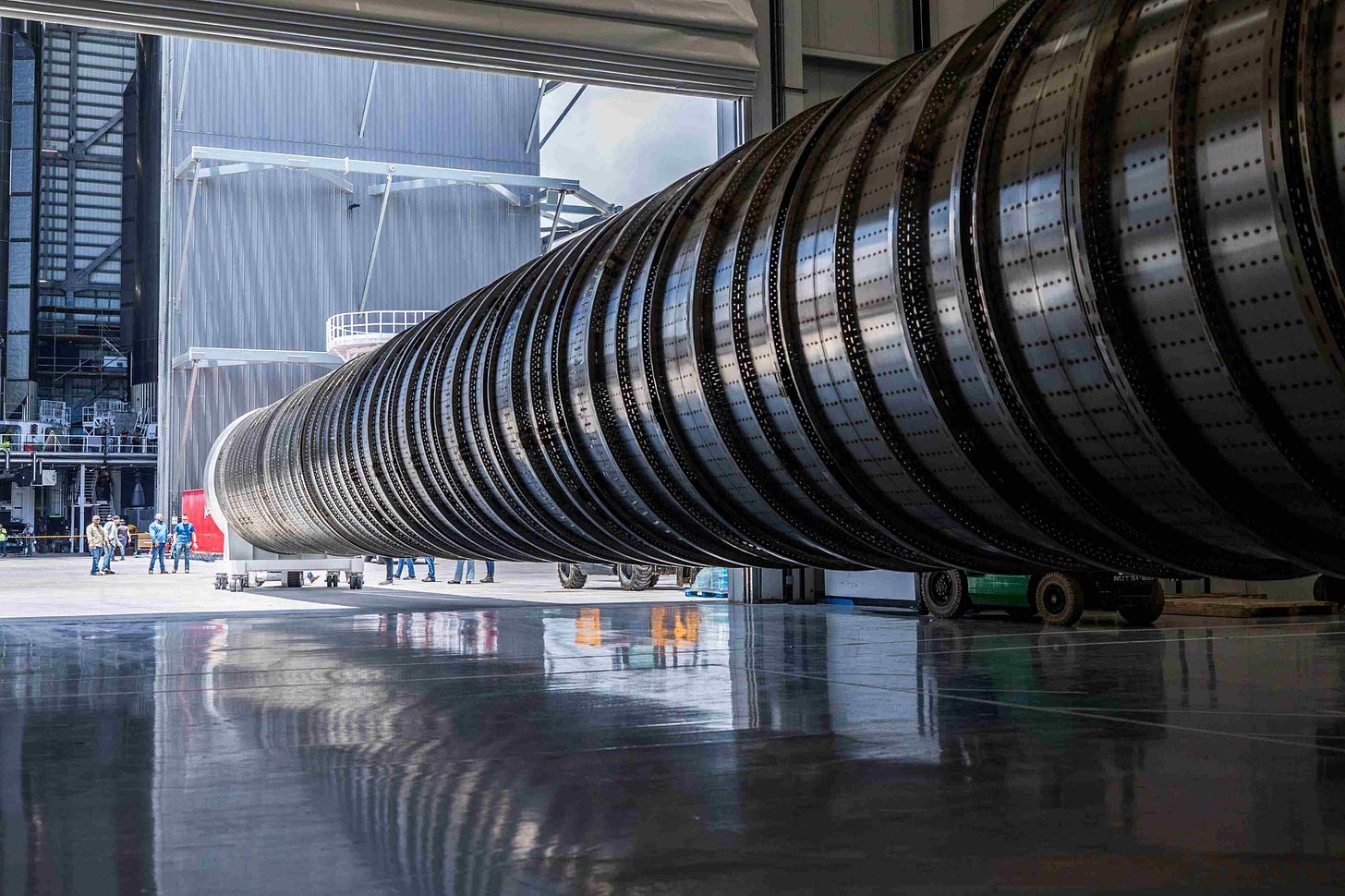SpaceX's operations at Starbase have faced significant challenges, primarily due to persistent rain and the explosion at Massie's test site for the Ship 36 static fire.
SpaceX has redesigned and installed a new fuel transfer tube. This should help prevent the explosion that happened with Ship 36.
The redesigned fuel transfer tube for the Superheavy booster is a key component. This massive tube, roughly the size of a Falcon 9 first stage, channels cryogenic fuel (liquid methane and oxygen) to the booster’s 33 Raptor engines.
The redesign brings several significant improvements:
Simultaneous Engine Startup: Unlike previous designs with staggered startups, the new tube allows all 33 engines to ignite at once, reducing risks like uneven thrust or ignition failures that affected past flights (e.g., Flights 7 and 8).
Enhanced Performance: Instantaneous ignition maximizes thrust from liftoff, critical for handling heavy payloads, with the booster capable of up to 9,800 tons of thrust in future configurations.
Improved Reliability and Reusability: Smoother startups reduce wear on engine components, supporting rapid turnaround, as seen with Booster 14’s reuse in Flight 9.
Better Landing Maneuvers: The tube enables faster, more reliable flip maneuvers during landing by ensuring precise fuel delivery for engine throttling and restarts, preserving fuel and improving control.
The tube is also designed to support upcoming Raptor 3 engines, which deliver 280 tons of thrust each (a 22% increase over Raptor 2’s 230 tons). It will handle cryogenic fuel for 33–35 engines at high pressure and flow rates, while resisting vibrations and thermal stresses, makes this a pivotal engineering upgrade.
The Ship 36 caused significant damage at the Massie test site. The nitrogen side of the tank farm is operational again, hinting at preparations for testing Booster 18.1 and Ship 38. Cleanup efforts are ongoing, with damaged components like the crab stand (used for static fire testing) being salvaged.
Uncertainty surrounds the central section, with potential plans to relocate some testing to Pad A.
SpaceX is building an adapter from a repurposed ship transport stand to enable static fire tests of Starships on Pad A’s orbital launch mount, originally designed for Super Heavy boosters. This is a critical, high-priority project to maintain launch cadence, with modifications ensuring the ship’s aft flaps are protected.
The orbital launch mount is being repaired, showing wear from extensive use, and tank farm tests may relate to loading ships via the booster side.
<b>New Air Separation Unit</b>
There is a new air Separation Unit at Starbase. SpaceX received approval from Cameron County Commissioners for an air separation unit at Starbase. This facility will produce nitrogen and oxygen on-site, reducing the need for over 200 gas delivery trucks per launch. Located on a 1.66-acre beachfront site with a 159-foot tower, the project requires SpaceX to mitigate environmental impacts on dunes and vegetation, with county oversight to ensure compliance.
On Pad 2, the orbital launch mount now has 20 hold-down arms, and the tower is under construction with cladding panels and preparations for the ship quick disconnect arm.
SpaceX is making good progress on Block 3 nose cones and ships (Ship 39 and Ship 40). SpaceX has a tight timeline to meet Elon Musk’s goal of launching by year-end.
Stacking and testing schedules suggest potential launches in November or December, though delays are possible due to the new design’s complexity.
Gigabay Construction Foundation construction work is advancing. The structure is to be assembled on-site unlike previous bays.
SpaceX McGregor engine Test Facility had conducted 21 Raptor tests.







I stopped reading after seeing this: "SpaceX has redesigned and installed a new fuel transfer tube. This should help prevent the explosion that happened with Ship 36." The transfer tube is for the Super Heavy booster, not Starship. Jeeze...